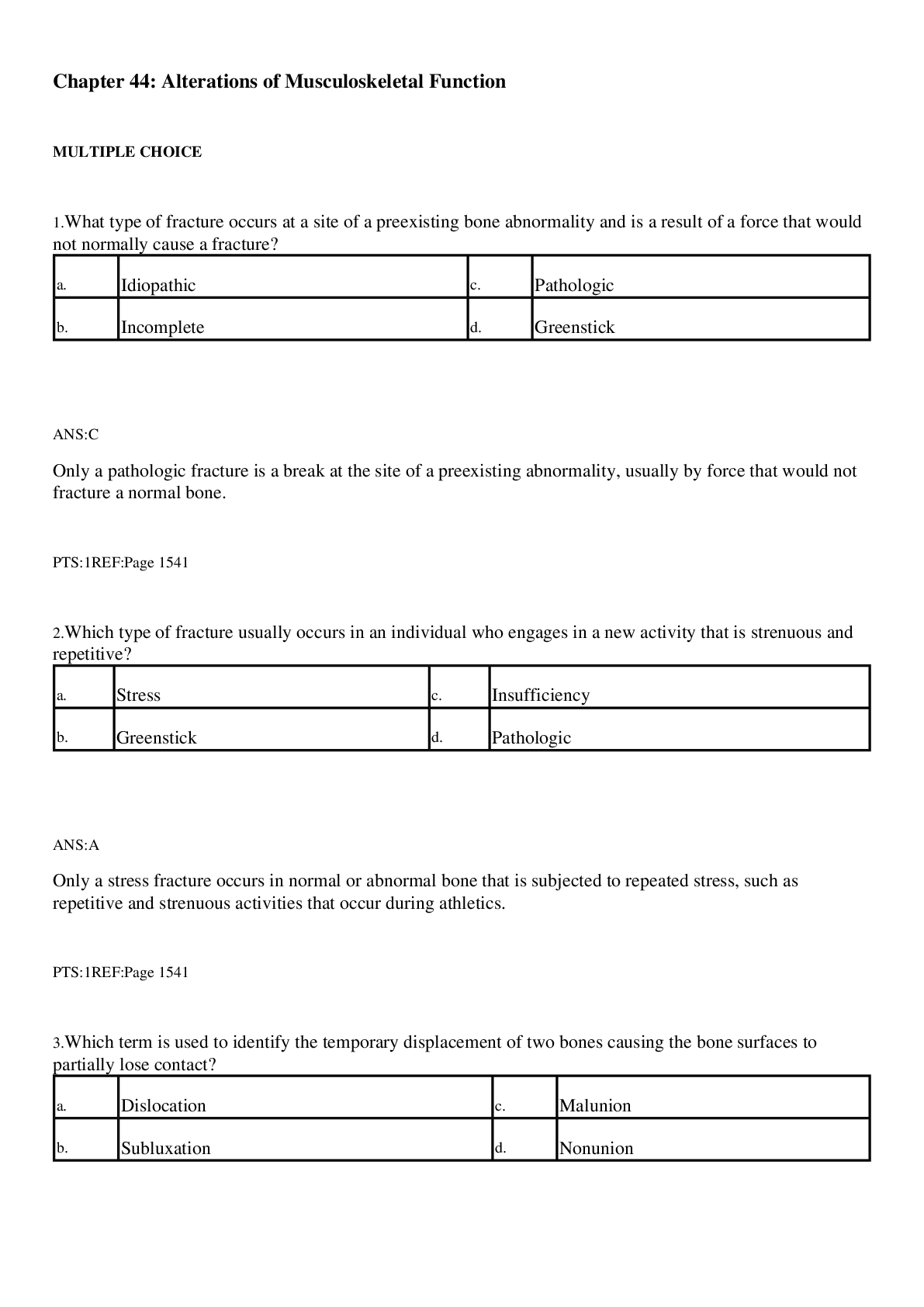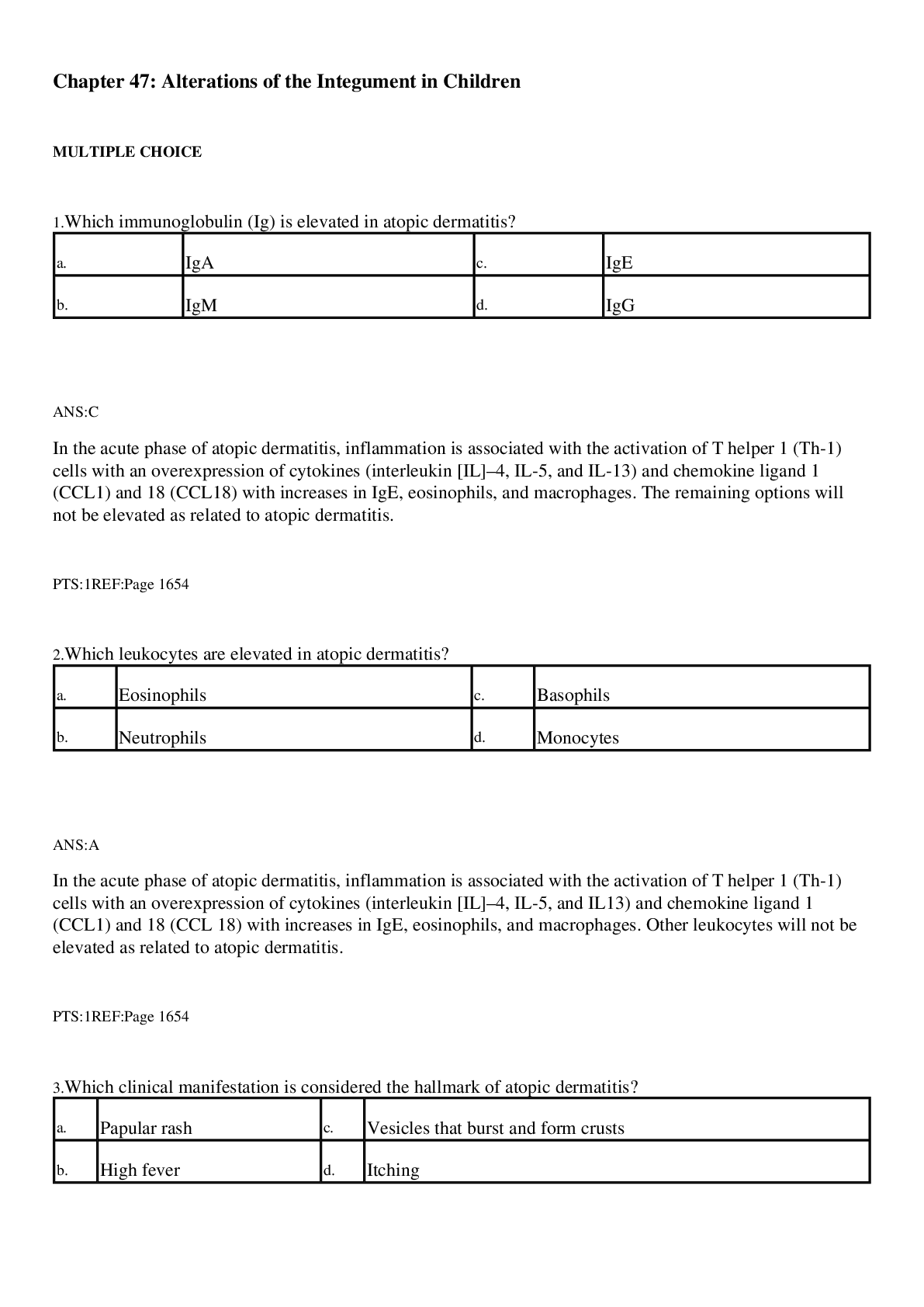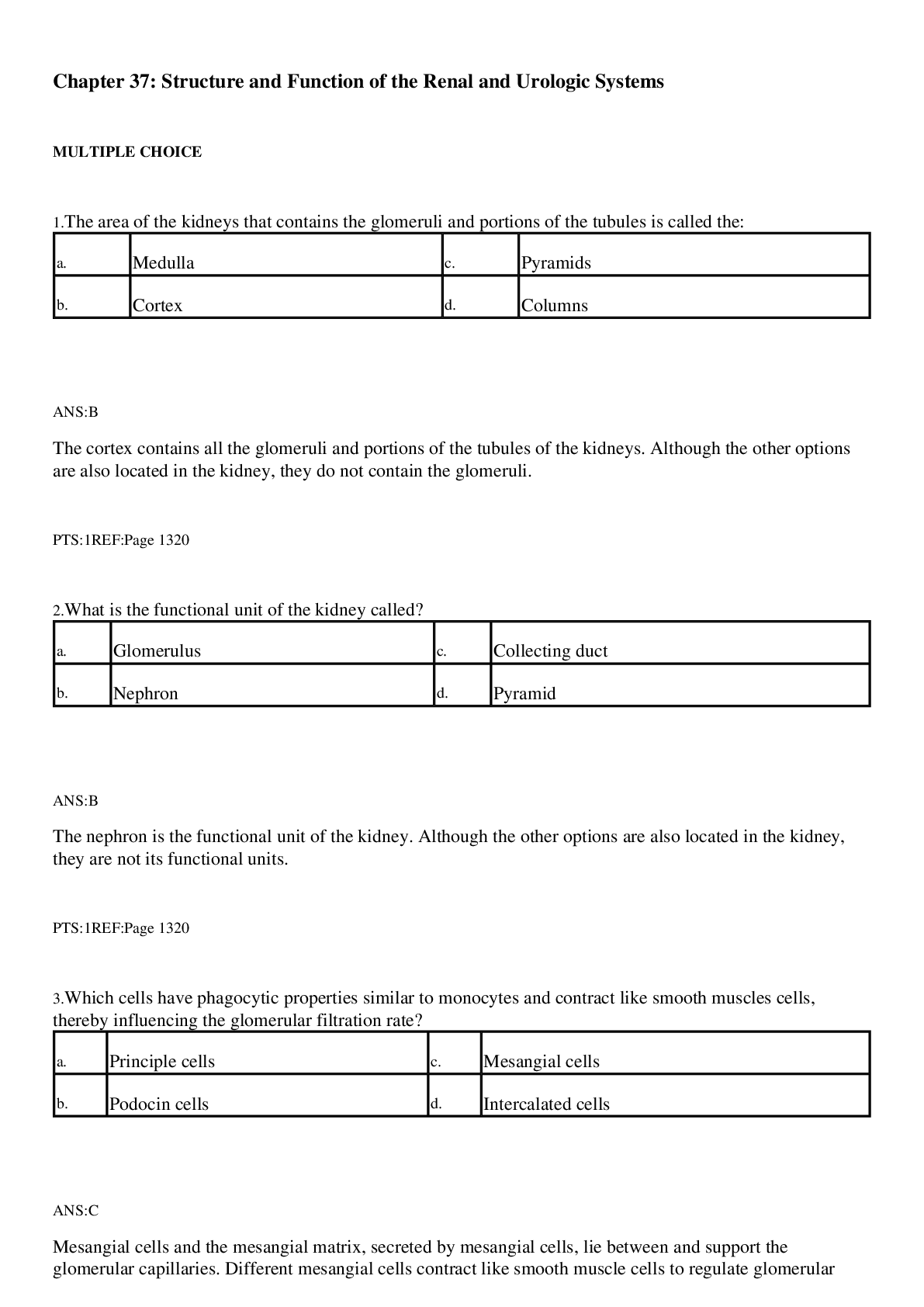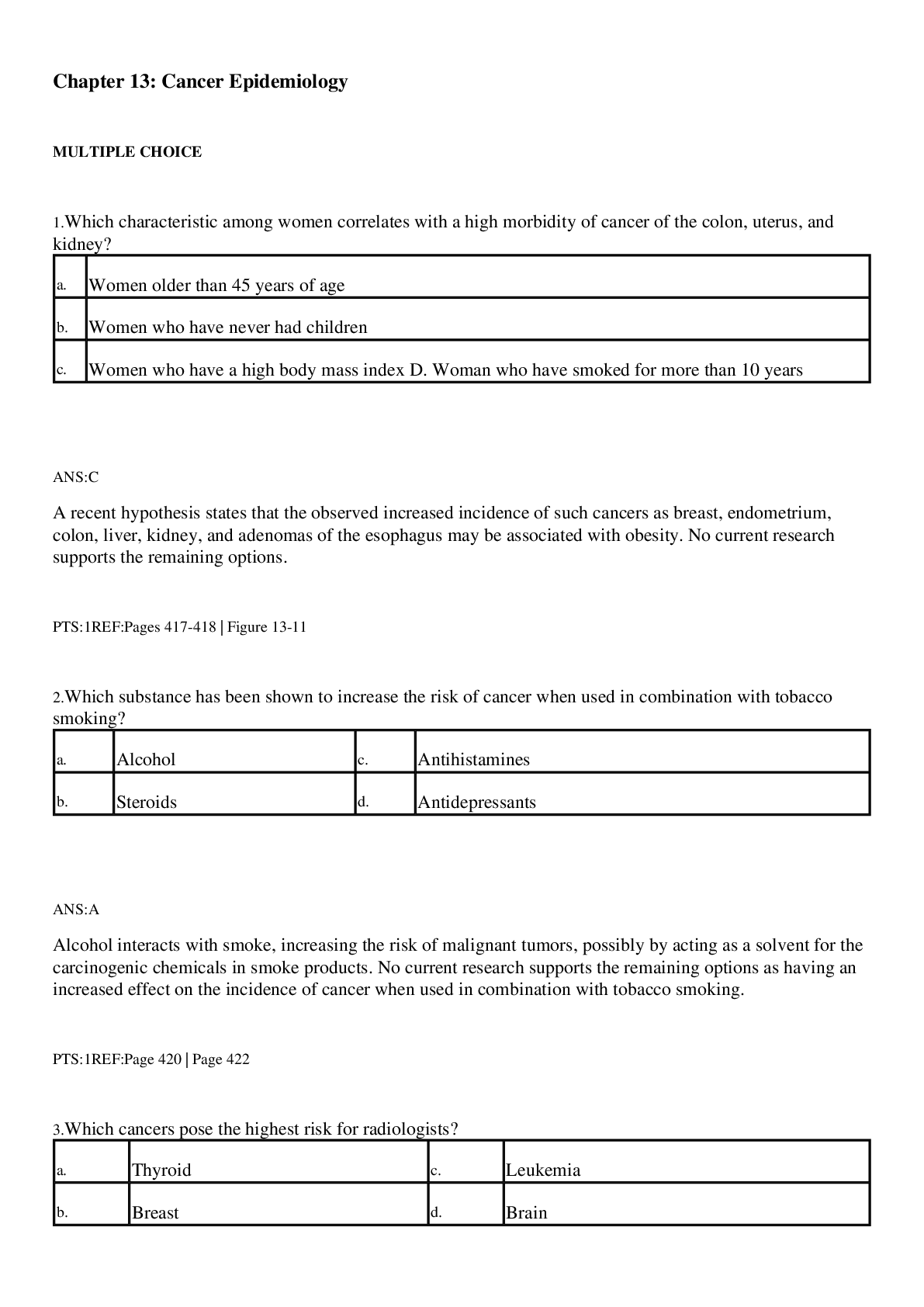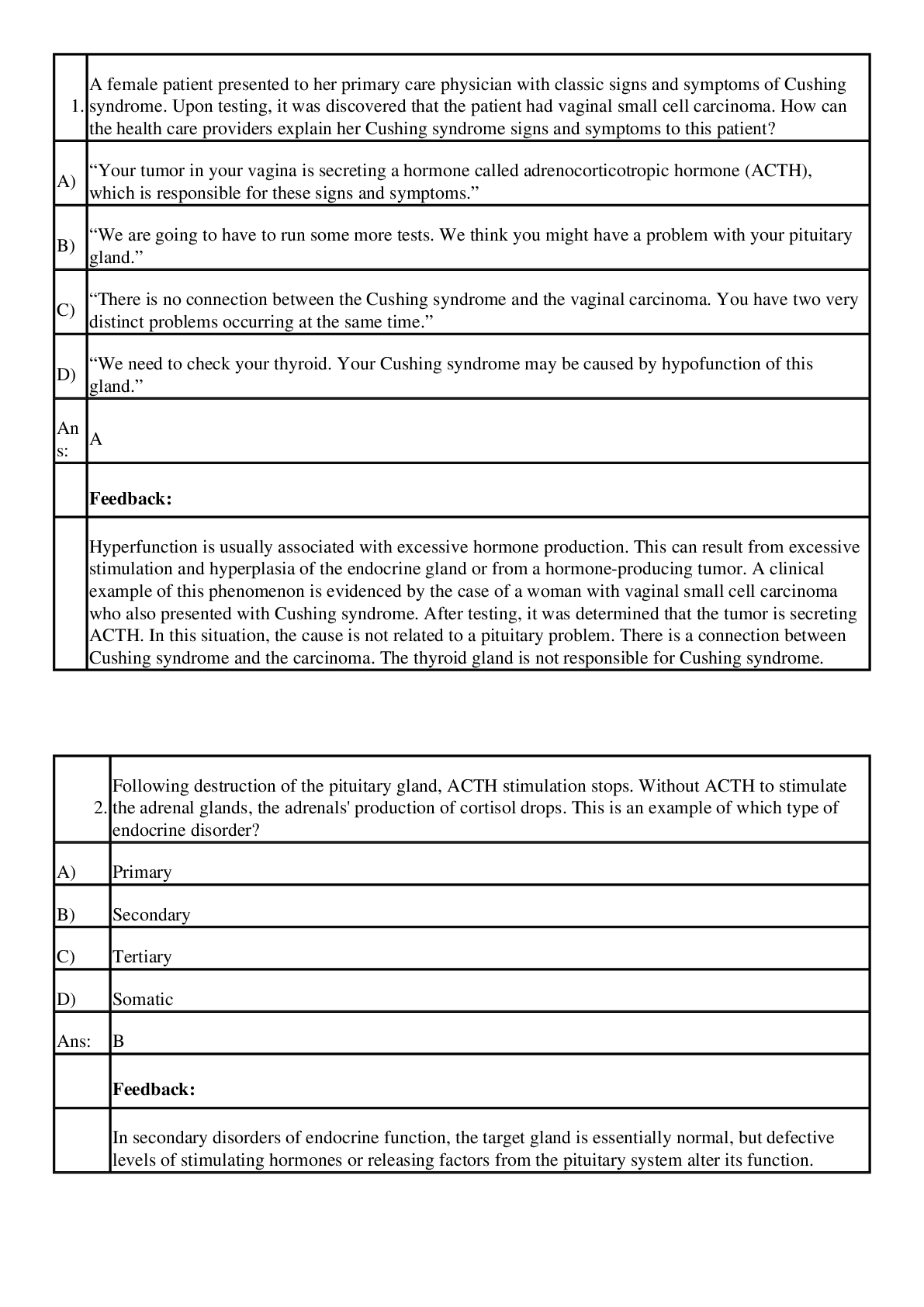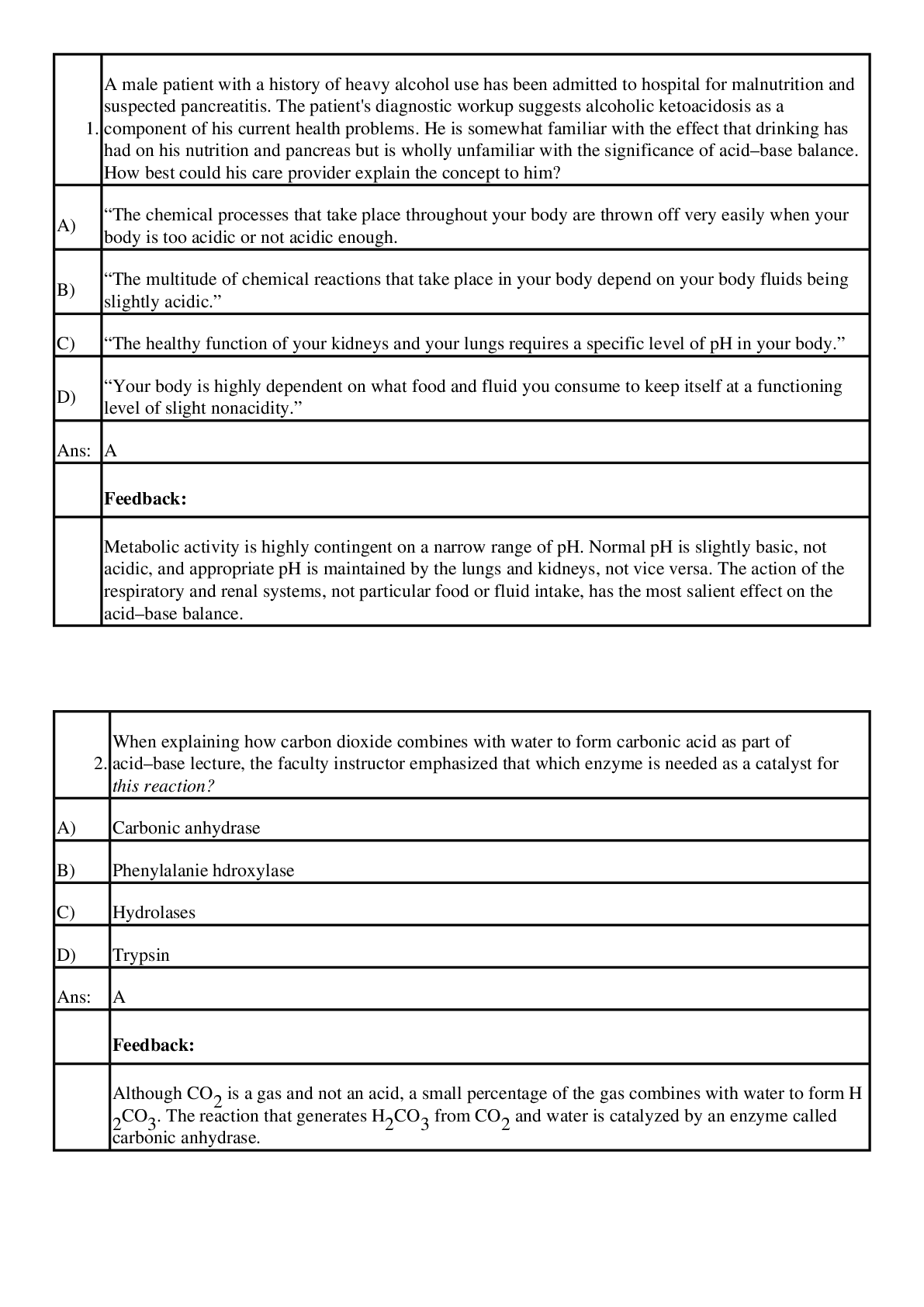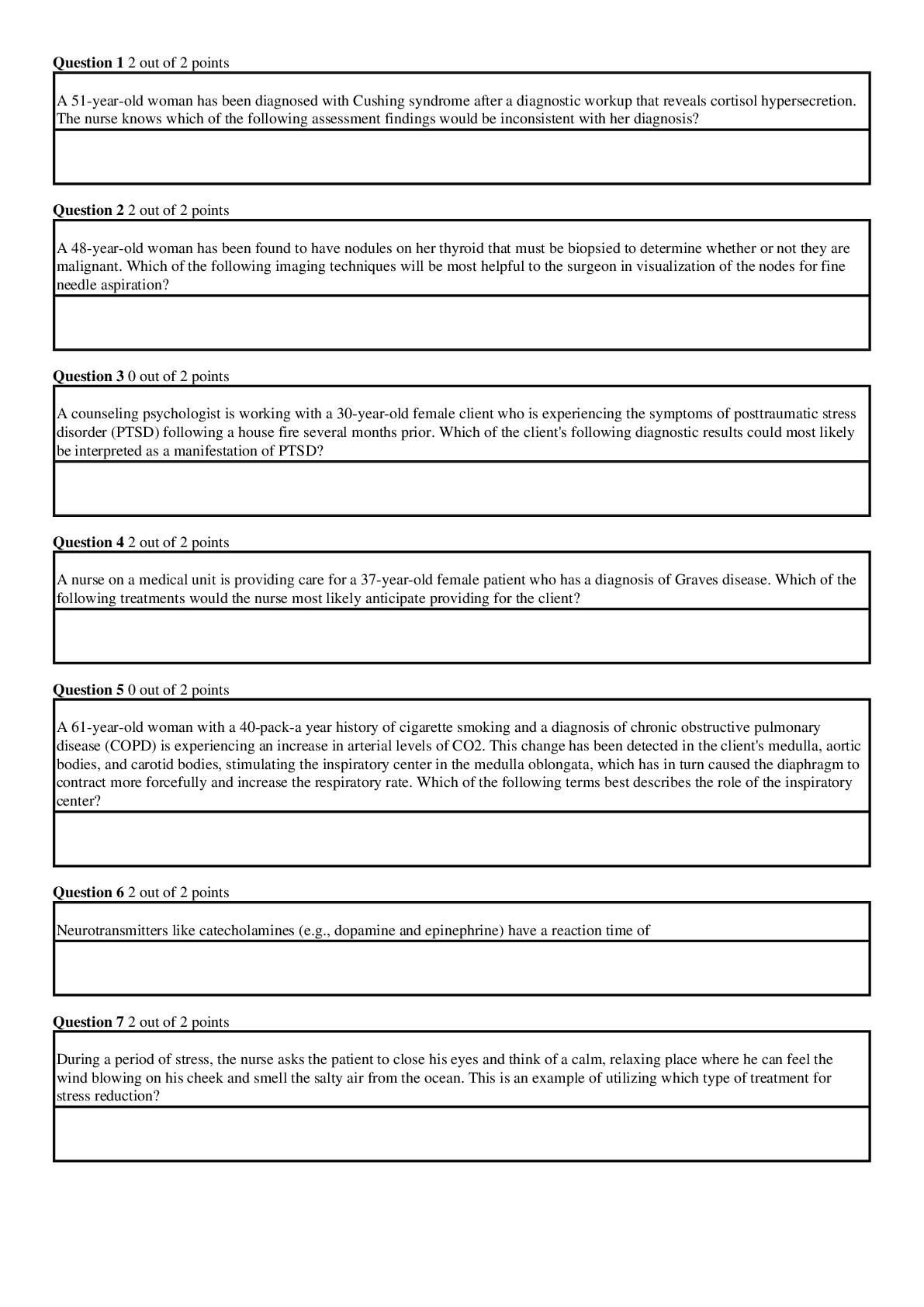Pathophysiology Unit 2 6 Test Bank NURSE 395
Document Content and Description Below
1. A client develops interstitial edema as a result of decreased: A) Vascular volume B) Hydrostatic pressure C) Capillary permeability D) Colloidal osmotic pressure Ans: D Feedback: Edema can... be defined as palpable swelling produced by an increased interstitial fluid volume. The physiologic mechanisms that contribute to edema formation include factors that (1) increase capillary filtration (hydrostatic) pressure, (2) decrease the capillary colloid osmotic pressure, (3) increase capillary permeability, or (4) produce obstruction to lymph flow. 2. A client has been receiving intravenous normal saline at a rate of 125 mL/hour since her surgery 2 days earlier. As a result, she has developed an increase in vascular volume and edema. Which of the following phenomena accounts for this client's edema? A) Obstruction of lymph flow B) Increased capillary permeability C) Decreased capillary colloidal osmotic pressure D) Increased capillary filtration pressure Ans: D Feedback: An increase in vascular volume results in an increase in capillary filtration pressure. Consequently, movement of vascular fluid into the interstitial spaces increases and edema ensues. An increase in vascular volume does not directly result in obstruction of lymph flow, increased capillary permeability, or decreased capillary colloidal osmotic pressure. 3. The most reliable method for measuring body water or fluid volume increase is by assessing: A) Tissue turgor B) Intake and output C) Body weight change D) Serum sodium levels Ans: C Feedback: Daily weights are a reliable index of water volume gain (1 L of water weighs 2.2 pounds). Daily weight measurements taken at the same time each day with the same amount of clothing provide a useful index of water gain due to edema. When an unbalanced distribution of body water exists in the tissues and organs, assessment of surface skin tissue turgor will be inaccurate. Measurement of renal output is unreliable because fluid retention may be a compensatory response, or the renal system may be dysfunctional. Serum sodium levels are affected by multiple variables other than body water volume. 4. A client with a diagnosis of liver cirrhosis secondary to alcohol abuse has a distended abdomen as a result of fluid accumulation in his peritoneal cavity (ascites). Which of the following pathophysiologic processes contributes to this third spacing? A) Abnormal increase in transcellular fluid volume B) Increased capillary colloidal osmotic pressure C) Polydipsia D) Impaired hormonal control of fluid volume Ans: A Feedback: Third spacing represents the loss or trapping of extracellular fluid (ECF) in the transcellular space and a consequent increase in transcellular fluid volume. The serous cavities are part of the transcellular compartment located in strategic body areas where there is continual movement of body structures—the pericardial sac, the peritoneal cavity, and the pleural cavity. Polydipsia and increased fluid intake alone are insufficient to cause third spacing, and increased capillary colloidal osmotic pressure would result in increased intracellular fluid (ICF). The etiology of third spacing does not normally include alterations in hormonal control of fluid balance. 5. A 2-week-old infant (full-term at birth) is admitted to the pediatrics unit with “spitting up large amounts of formula” and diarrhea. The infant has developed a weak suck reflex. Which of the following statements about total body water (TBW) is accurate in this situation? A) About 52% of the infants' weight accounts for the amount of water in their body. B) Because of the infants' higher fat ratio, one should anticipate an increased TBW to as high as 90%. C) Most full-term infants have a TBW of approximately 75% due to their high metabolic rate. D) Most of an infant's TBW remains in the ICF compartment, so they should be able to transfer needed water into the ECF space. Ans: C Feedback: Infants normally have more TBW than older children or adults. TBW constitutes approximately 75% to 80% of body weight in full-term infants and an even greater percentage in premature infants. In males, the TBW decreases in the elderly population to approximately 52% TBW. Obesity decreases TBW, with levels as low as 30% to 40% of body weight in adults. Infants have more than half of their TBW in their ECF compartment, as compared to adults. [Show More]
Last updated: 1 year ago
Preview 1 out of 172 pages
Instant download
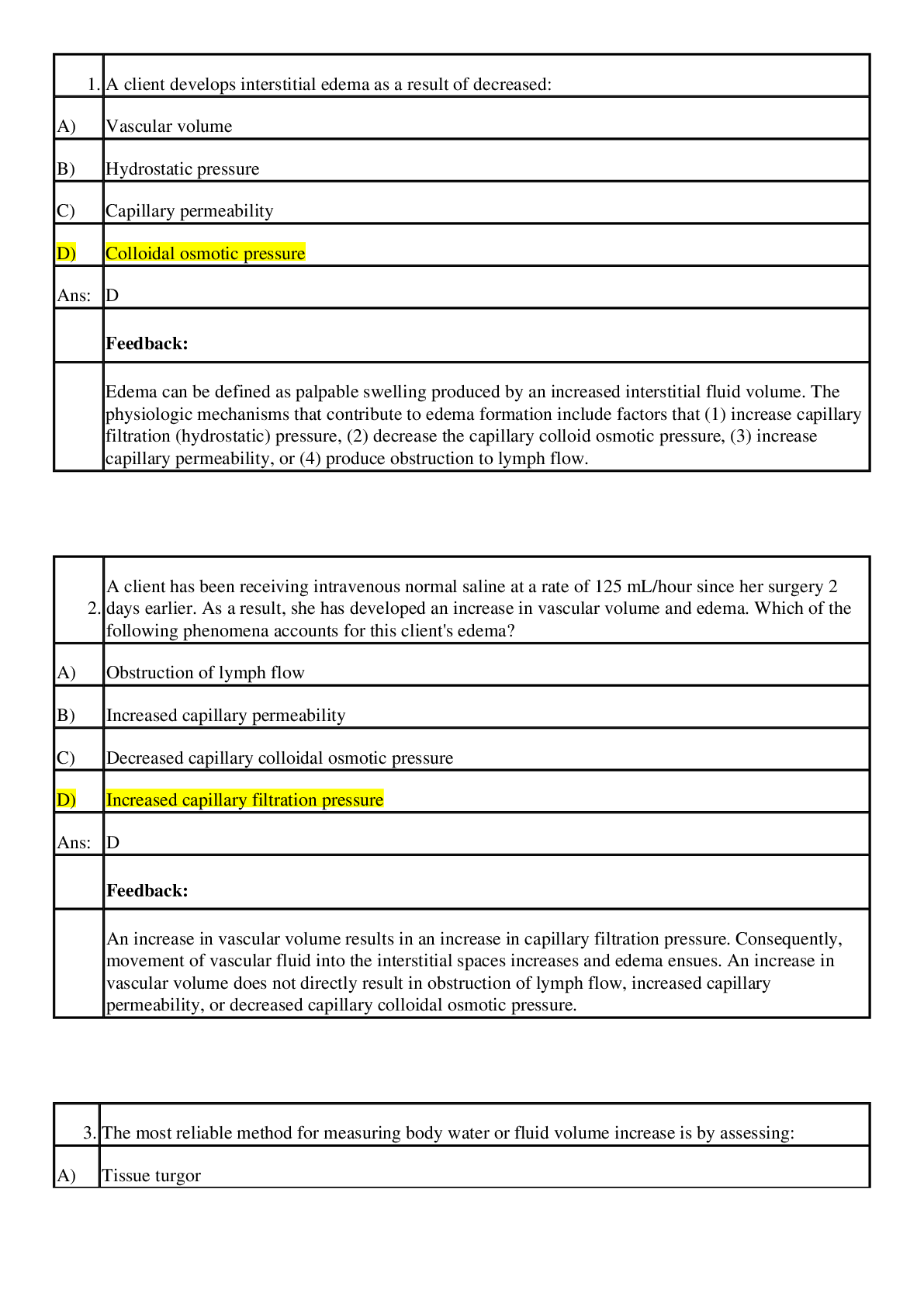
Buy this document to get the full access instantly
Instant Download Access after purchase
Add to cartInstant download
Reviews( 0 )
Document information
Connected school, study & course
About the document
Uploaded On
Feb 18, 2021
Number of pages
172
Written in
Additional information
This document has been written for:
Uploaded
Feb 18, 2021
Downloads
0
Views
56

